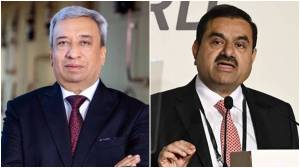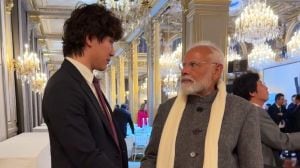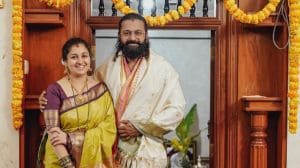The Tuli Research Centre for India Studies (TRIS) successfully launched “The World’s Greatest Mela – Respecting India’s Cinematic Heritage,” an extraordinary exhibition that attracted large audiences at the India Habitat Centre in New Delhi. Curated by the visionary Founder & President Neville Tuli, this exhibition provided a profound exploration of Indian cinema as a critical educational resource, a concept that TRIS aimed to embed into academic discourse and public consciousness. Various educational institutions sent their students to gain insights into India’s progress through the lens of cinema, with curatorial tours led by Neville Tuli himself.
Exhibition Focus: A Tribute to Three Decades of Preservation
The historic exhibition stood as a testament to Neville Tuli’s tireless dedication over the past three decades to preserving and curating a remarkable collection of over 400,000 unique objects related to Indian and Asian arts, crafts, and world cinema. These objects, carefully archived and preserved, formed a rich knowledge base integral to India Studies. Tuli’s work not only safeguarded these treasures but also transformed them into accessible resources for education and research.
Public Access: All Associated Resources Free for All Visitors
The exhibition at the Visual Arts Gallery & Open Palm Court of the India Habitat Centre provided a truly democratic cultural experience. In a significant move towards inclusivity, TRIS made the event and all associated resources free for all visitors. This approach underscored TRIS’s commitment to making cultural heritage accessible to everyone, regardless of background, ensuring that the educational benefits of this exhibition were enjoyed by a diverse audience.
Educational Vision: Cinema as a Pedagogical Resource
At the heart of the exhibition was Neville Tuli’s pioneering vision of cinema as a critical educational resource. Traditionally, cinema has been viewed primarily through the lens of entertainment or as a subject within film and cultural studies. However, Tuli pushed the boundaries of this perspective, advocating for the inclusion of cinema within the broader educational curriculum. He aimed to establish cinema as a vital visual-textual knowledge base that could enhance the study of India’s history, culture, and social dynamics.
In line with this vision, the exhibition also served as a precursor to the development of a new three-year undergraduate program in India Studies, which TRIS planned to introduce, again free for all. This program would utilize cinema as a primary and secondary source of knowledge, challenging students to engage with films not just as cultural artifacts but as rich, multifaceted texts offering insights into India’s past, present, and future.
Curatorial Insights: Exploring the Depths of Indian Cinema
The exhibition was meticulously curated to explore various critical aspects of Indian cinema, offering visitors a comprehensive understanding of its cultural, intellectual, and emotional significance. The sections were designed to delve deep into specific themes, each contributing to the overarching narrative of cinema as an educational resource.
Cinematic Chemistry: This section examined the dynamic collaborations that defined Hindi cinema over the decades. It highlighted how the chemistry between actors, directors, lyricists, composers, and other creative partnerships not only led to box-office success but also created cultural milestones. From the timeless on-screen partnerships of Raj Kapoor-Nargis to the iconic actor-director duo of Amitabh Bachchan and Manmohan Desai, the exhibition explored how these collaborations shaped the cinematic landscape of India.
Dance in Indian Cinema: Dance has always been an integral part of Indian cinema, serving as both a form of storytelling and cultural expression. This section traced the evolution of dance in films from the silent era to the present day. It highlighted how the advent of sound brought new life to dance sequences, turning them into powerful narrative tools that captivated audiences and preserved traditional dance forms for future generations. Films like V. Shantaram’s “Jhanak Jhanak Payal Baje” and Sanjay Leela Bhansali’s “Devdas” were showcased as exemplars of how dance in cinema evolved while maintaining its cultural roots.
The Devdas Mystique: Sarat Chandra Chattopadhyay’s 1917 novel “Devdas” inspired numerous adaptations, each reflecting the socio-cultural milieu of its time. This section chronicled the enduring appeal of “Devdas,” examining key adaptations by directors like P.C. Barua, Bimal Roy, and Sanjay Leela Bhansali. It explored how each version interpreted the tragic love story differently while also discussing the film’s impact on Indian cinema and its status as a cultural touchstone.
Kamal Amrohi: The Visionary: Kamal Amrohi’s contribution to Indian cinema was celebrated in this section, focusing on his journey from scriptwriting to directing some of the most iconic films in Indian history. The exhibition highlighted his masterpieces like “Mahal,” which established his reputation as a filmmaker with a unique vision, and “Pakeezah,” a film that took 16 years to complete and remains one of Indian cinema’s most cherished classics. Amrohi’s work was presented as a blend of artistic expression and technical brilliance, showcasing his ability to elevate the cinematic narrative to new heights.
Shashi Kapoor: A Legacy of Grace, Talent, and Versatility: Shashi Kapoor’s illustrious career in Indian and international cinema was explored through this dedicated section. From his early days as a child actor to his collaborations with Merchant-Ivory Productions and his iconic roles alongside Amitabh Bachchan, the exhibition highlighted Kapoor’s versatility and his contributions to cinema as both an actor and a producer. His work in films like “Deewaar,” “Kabhi Kabhie,” and “Junoon” was showcased as examples of his range and enduring appeal.
Indian Silent Cinema (1931-1934): This section examined the foundational years of Indian cinema, focusing on the transition from silent films to talkies. It explored how early filmmakers like D.G. Phalke and Himanshu Rai used cinema to reflect and shape the social and cultural narratives of their time. The exhibition also delved into the influence of other art forms, such as painting, photography, and Parsi theatre, on the development of Indian cinema’s visual and narrative styles.
Uttam Kumar and Suchitra Sen: A Pair Like No Other: The on-screen pairing of Uttam Kumar and Suchitra Sen was celebrated in this section, which highlighted their impact on Bengali cinema and their enduring legacy. The exhibition showcased their most famous films, examining how their chemistry resonated with audiences and became a defining feature of Bengali cinema. The section also explored their films’ social and cultural context, which often addressed themes of romance, family, and social change.
Bengali Cultural Heritage: In a nod to the rich cultural history of Bengali cinema, this section featured a collection of vintage booklets from classic Bengali films. With their hand-painted posters and unique design elements, these booklets offered a glimpse into the artistry and creativity that characterized Bengali cinema during its golden age. The exhibition presented these booklets not just as promotional materials but as cultural artifacts that captured the essence of the films and the stars they featured.
Educational Impact: Reassessing Cinema’s Role in Learning
One of the key objectives of “The World’s Greatest Mela” was to inspire both the public and academia to reassess the educational possibilities of cinema. The exhibition challenged visitors to see films not just as entertainment, but as valuable educational tools that convey complex ideas and emotions. By presenting cinema as a medium that unites entertainment, art, and education, the exhibition sought to inject joy into the learning process—a vital element often missing in traditional educational systems.
Lecture and Conversation: Exploring Cinema as an Educational Resource
Neville Tuli delivered an illustrated lecture at the Stein Auditorium on “Cinema as a Critical Educational Resource.” The lecture was followed by a conversation between Tuli, Rinki Roy (daughter of Bimal Roy), and Tajdar Amrohi (son of Kamal Amrohi) on the “Life and Cinema of Kamal Amrohi & Meena Kumari.” This event provided further insights into the potential of cinema as a pedagogical tool and its impact on Indian culture and education.
Invitation to the Public: A Journey Through India’s Cinematic Heritage
TRIS invited everyone to embark on this enriching journey through India’s cinematic heritage. With all resources and events offered free of charge, the exhibition aimed to make cultural and educational experiences accessible to all. Visitors were encouraged to engage with the exhibition, reflect on the cultural significance of cinema, and explore its potential as a powerful tool for learning and personal growth.
A Transformative Cultural Experience
“The World’s Greatest Mela” was more than just an exhibition—it was a transformative cultural experience that challenged visitors to think differently about cinema and its role in society. Through its comprehensive exploration of Indian cinema, the exhibition not only honored the past but also set the stage for a future where cinema is recognized as a critical educational resource. TRIS, under the visionary leadership of Neville Tuli, continues to push the boundaries of cultural preservation and education, offering new perspectives and opportunities for learning through the art of cinema.









